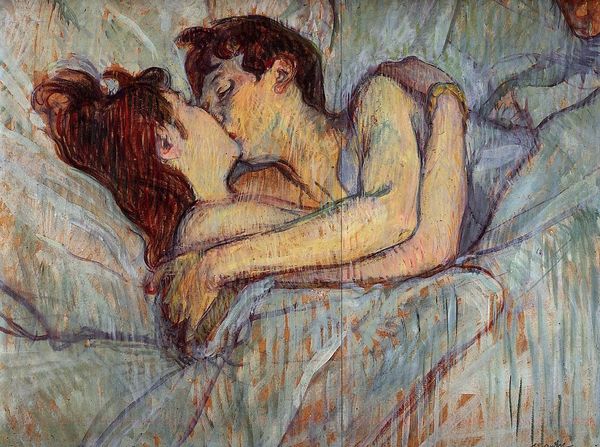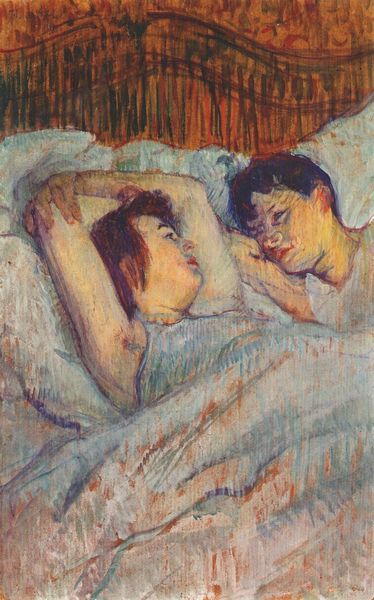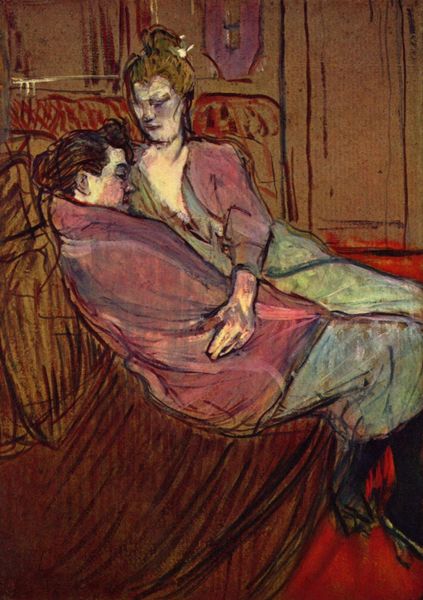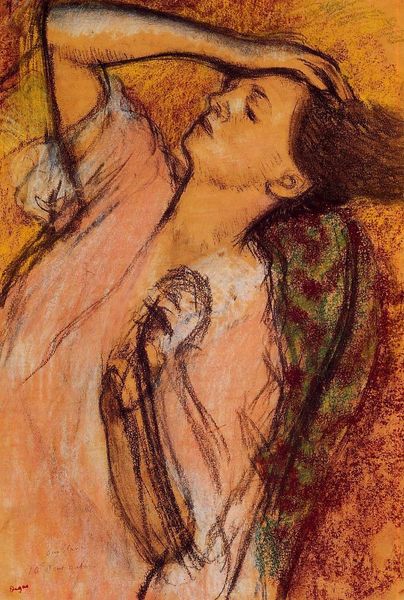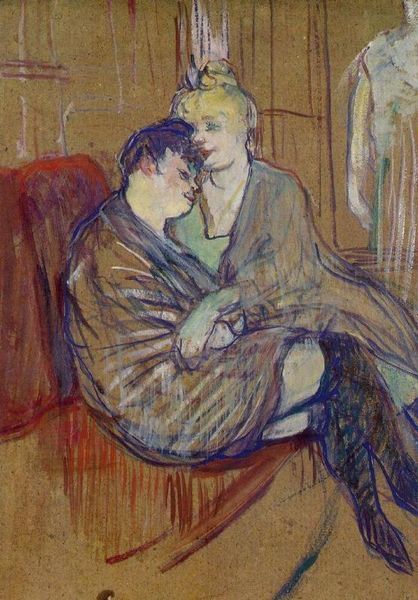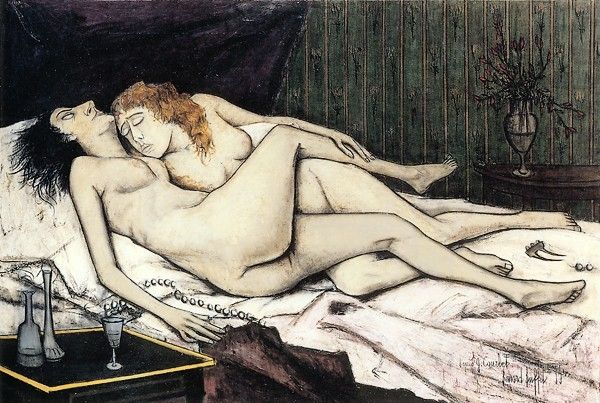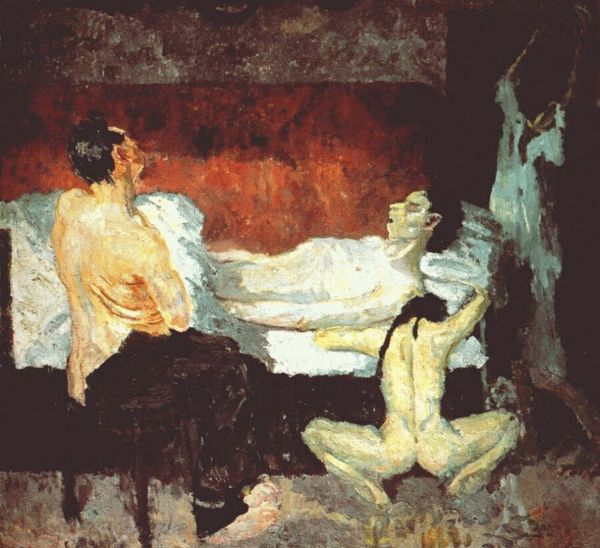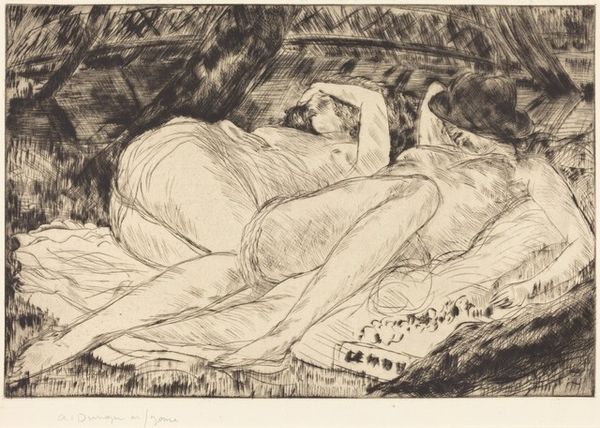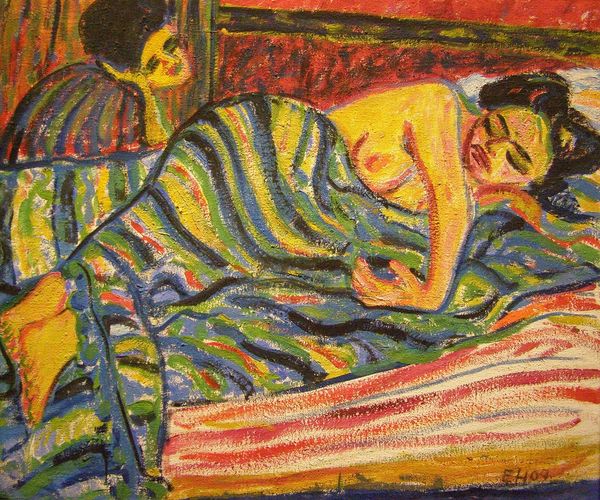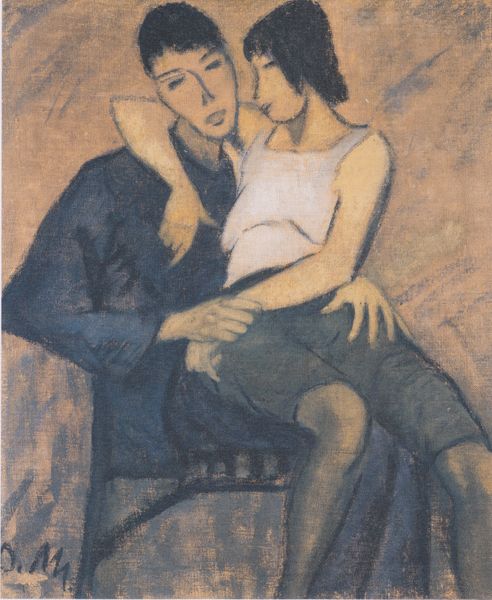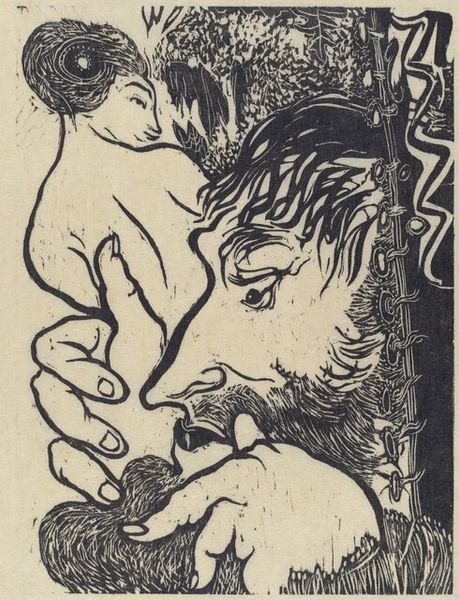
painting, oil-paint
#
painting
#
oil-paint
#
figuration
#
oil painting
#
expressionism
#
genre-painting
#
post-impressionism
#
nude
#
expressionist
#
erotic-art
Dimensions: 39 x 58 cm
Copyright: Public domain
Editor: This is Henri de Toulouse-Lautrec's "The Kiss," painted in 1893. It's an oil painting depicting two figures intimately embracing. I'm struck by the tenderness in the way they're holding each other. What do you see in this piece? Curator: This work invites us to consider the social spaces of intimacy, particularly for marginalized communities. Painted during a time of intense social conservatism, "The Kiss" likely depicts two women, possibly sex workers, in a moment of private affection. How does it shift your perspective to consider it as a portrayal of lesbian intimacy within the Parisian demimonde? Editor: It does make me think differently about it. There's a vulnerability to it now that I see it through that lens – a quiet defiance almost. Curator: Precisely. Lautrec often focused on subjects considered outside the norm, subtly challenging the rigid societal boundaries of his time. Consider also the expressive brushstrokes, characteristic of Post-Impressionism. How do they contribute to the painting’s emotional weight and sense of lived experience? Does it strike you as raw or idealized? Editor: I'd say it feels quite raw. The sketchiness makes it seem very immediate and unvarnished, and not idealized at all. It feels honest, almost like eavesdropping. Curator: Yes, Lautrec avoids idealizing these figures, presenting a real, perhaps fleeting, connection. Understanding the historical context of this image, along with Lautrec's interest in depicting overlooked communities, deepens our engagement with the work, wouldn't you agree? Editor: Definitely. I hadn't fully appreciated the social commentary embedded in this intimate scene before. Curator: And that's the power of art history – revealing these layers of meaning and challenging our assumptions about the past and the present.
Comments
No comments
Be the first to comment and join the conversation on the ultimate creative platform.
